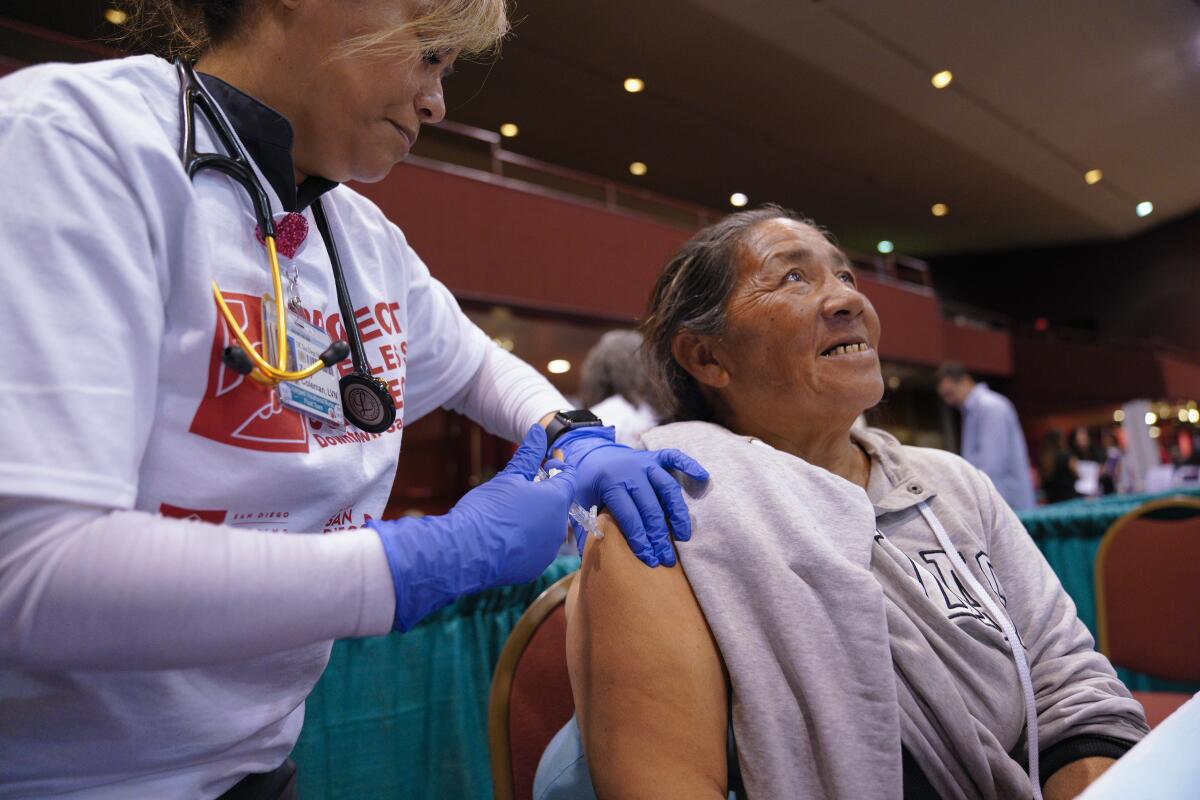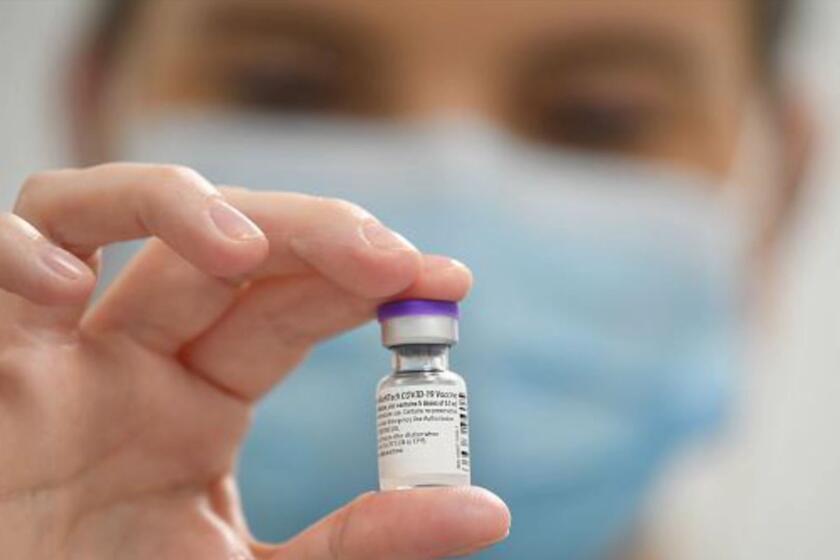Grin and bear it: A smile or grimace may reduce needle injection pain, UC Irvine researcher shows
UC Irvine has good news for the 50 million Americans who are afraid of needles.
In a recently published paper, UC Irvine researchers found that simply smiling or grimacing can significantly reduce pain from needle injections.
The researchers also found that a smile can reduce the stress of a needle injection and lower an individual’s heart rate.
“If you can put yourself in a good mood while you’re stressed it really helps it go away faster,” said Sarah Pressman, principal investigator and UC Irvine professor of psychological science. “If you’re in a positive mood when something stressful happens, you don’t perceive it as being as bad.”
”... There is this natural predisposition where a lot of people smile when they’re stressed. There’s just like nervous smiling that sometimes happens. And we really wondered, why do people do this? Why do they smile during stress if it’s not useful?”
For the study, which was published in the online journal Emotion, the researchers analyzed the responses of 231 people who were injected with a needle the size of a typical flu shot.
Participants were asked to either express a Duchenne smile, non-Duchenne smile, grimace or a neutral facial expression.
When people talk about COVID-19 vaccines, they can sound like they’re speaking a foreign language. Don’t worry! Here’s your guide to vaccine vocabulary.
A Duchenne smile is a genuine smile that raises the corners of the mouth and produces crows feet around the eyes.
The individuals who expressed the Duchenne smile and grimace reported that the injection hurt only about half as much as the participants in the neutral expression group. The Duchenne smile group also showed lower heart rates.
Pressman said they don’t yet fully understand why the facial expressions help dampen pain and stress. The theory behind it is called the facial feedback hypothesis.
“Which is just the idea of like fake it ‘til you make it’,” Pressman said. “So, this idea that if you pretend like you’re feeling a certain emotion, then it should translate into feeling that to some extent. It should alter your emotion.”
Pressman said the idea has been around since Charles Darwin proposed it in the 1800s. Psychologists have been researching it for the past few decades.
“The thought is that the nerves in your face, that when those muscles are activating they actually send a message to your brain that’s telling you that you’re happy,” Pressman said. “... The basic premise is that somehow that expression is sending signals back to your mind, and it’s altering your emotion in some sense.”
Pressman said researchers have long thought that the evolutionary purpose of smiling is, at least partially, to signal to other people that you are not a threat.
So smiling has an anti-stress effect because it is meant to encourage us to be social.
2020 is (finally) drawing to a close.
Pressman said it’s also possible that if facial nerves are sending messages to the brain, then they could also send messages to the body.
In particular, it could be signaling a nerve which is responsible for parasympathetic function in the body. Pressman said it could be telling this “rest and digest” nerve to calm down.
“It could be that those nerves, when you smile, are actually directly triggering that sort of relaxation nerve in the body and that’s why it’s reducing stress, that’s why it’s making things not hurt as much,” Pressman said.
Pressman said the explanation for why grimacing may reduce pain is more complex because researchers have not really been studying the expression.
The UC Irvine researchers included it in the study because it’s the face people naturally make in response to pain.
Pressman said the grimace is interesting because it actually resembles a smile. In the study, the expression worked similarly as a smile in lessening pain.

“The really interesting thing that we found was that, while they both made you feel psychologically better, and grimacing was even helpful in reducing your perceived stress, only the smiling was associated with a physical effect,” Pressman said. “So, when we have a stress response, you know, our heart rate goes up. And so we were monitoring that, and it was really interesting because the grimacing group, even though they felt better, they looked identical to our control group when you look at their physiology.”
Pressman said some of the same muscles are activated during a grimace and smile. But the grimace also includes activation of negative emotion muscles, which may “cancel out” the physiological benefit of the reduced heart rate.
Pressman said smiling helps with other kinds of pain and stress as well, though it’s likely more helpful in situations where the pain is short-lasting.
Previous research showed that it helped with cold-related pain and stress, like from putting your hand in a bucket of ice.
“Since we know it helps with cold pain and with needle pain, there’s no reason to think that it wouldn’t help with other kinds of pain,” Pressman said, pointing out that it likely won’t help with more extreme or chronic types of pain, like cutting off a finger.
All the latest on Orange County from Orange County.
Get our free TimesOC newsletter.
You may occasionally receive promotional content from the Daily Pilot.





